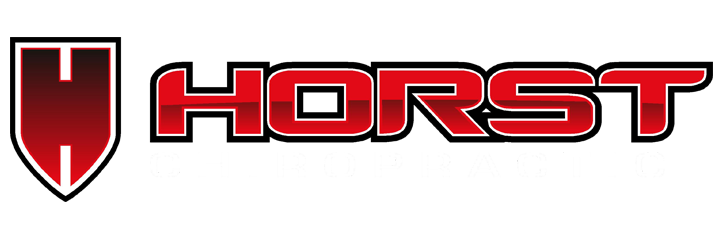Headaches
Temecula – Headache Pain Relief Treatment
Headaches: Why They Occur and What You Can Do
Headaches affect just about everyone at some point and they can present themselves in many different ways; they can be in different locations, feel differently or present at different times of the day. Fortunately, very few headaches have serious underlying causes, but those that do, require urgent medical attention. Usually headaches of more serious origins are constant throughout the day and are not made better by sleep. Headaches can have a variety of causes such as drug reactions, low blood sugar or high blood pressure; however an aggravating factor or primary cause is usually muscle tightness in the neck. The majority of recurrent headaches are of two types: tension headaches (also called cervicogenic headaches) and migraine headaches. There is a third, less common, type of headaches called a cluster headache, which is a cousin to the migraine headache. Let’s start out by taking a look at each of these three types of headaches.
Tension Headaches (Stress or Cervicogenic Headaches)
Tension type headaches are the most common, affecting upwards of 75% of all headache sufferers. Most people describe a tension headache as a constant dull, achy feeling either on one side or both sides of the head, often described as a feeling of a tight band or dull ache around the head or behind the eyes. These headaches usually begin slowly and gradually and can last for minutes or days, and tend to begin in the middle or end of the day. Tension headaches are often the result of stress or bad posture, which stresses the spine and muscles in the upper back and neck. Although the pain can at times be severe, tension headaches are usually not associated with other symptoms, such as nausea, throbbing or vomiting. Keep in mind, this is a textbook presentation of tension headaches, however, real life does not always read the textbooks.
As one might guess, tension headaches are primarily caused by tension, muscular tension actually. Usually the muscles of the upper neck are involved the most, although you may feel pain in your shoulders as well. One muscle is thought to cause pain more than the rest is known as the rectus capitis posterior minor. This tiny muscle, which about the size of the nail on your index finger, has a direct attachment to the sheath of your spinal cord and essentially to your brain. So after a long day at the computer, this muscle will tighten up and will pull on the sheath, causing pain in your head.
Other muscles of your neck can and mostly are involved with tension headaches. Some names of these muscles are: the splenius muscles, the suboccipitals, the sternocleidomastoid (SCM) and the trapezius. It is common to have adhesions in all of these muscles at the time, causing a “migraine-like” headache. Many patients experience pain “behind their eye.” The patient may also experience balance problems, visual disturbances, dizziness, and nausea; these can be caused by SCM involvement. Needless to say, it is easy to see that the muscles of the neck have a profound influence on headache presentation. For this reason, tension headaches can never be fully ruled out. Treatment for tension headaches will be discussed later in the article.
Migraine Headaches
Each year, about 25 million people in the U.S. experience migraine headaches, about 75% are women. Migraines are intense and throbbing headaches that are often associated with nausea and sensitivity to noise or light. Many of those who suffer from migraines experience visual symptoms called an “aura” just prior to an attack that is often described as seeing flashing lights or that everything takes on a dream-like appearance. Migraine sufferers usually have their first attack before age 30 and they tend to run in families, supporting the notion that there is a genetic component to them. Migraine headaches are caused by a constriction of the blood vessels in the brain, followed by a dilation of blood vessels. The constriction of the blood vessels causes a decrease in blood flow, leading to the visual changes. Even in people who don’t experience the classic migraine aura, most of them can tell that an attack is imminent. Blood vessels dilatation, causes a rapid increase in blood pressure inside the head; yielding the pounding effect. Each time the heart beats it sends another shock wave of pain into the head.
There are many theories about why the blood vessels constrict in the first place, but no one knows for sure. What we do know is that there are a number of things that can trigger migraines, such as lack of sleep, stress, flickering lights, strong odors, changing weather patterns and several foods; especially foods that are high in an amino acid called ‘tyramine.’ At the end of this page, I have listed a number of foods that are most likely to trigger migraines, as well as some lifestyle changes you can make to reduce the likelihood that you will trigger a migraine headache.
Cluster Headaches
Cluster headaches are typically very short-duration, excruciating, almost “suicidal” headaches, usually felt on one side of the head behind the eyes. Cluster headaches affect about 1 million people in the United States and, unlike migraines, are much more common in men. This is the only type of headache that tends to occur at night. The reason that they are called ‘cluster’ headaches is that they tend to occur one to four times per day over a period of several days. After one cluster of headaches is over, it may be months or even years, before they occur again. Like migraines, cluster headaches are likely to be related to a dilation of the blood vessels in the brain, causing a localized increase in pressure.
How Can Chiropractic Care Help with Headaches?
It is very important to realize, many headaches are misdiagnosed. I can’t tell you how many people present with “migraines” and receive significant improvements from treatment. In reality, they never had migraines, but tension headaches instead. Numerous research studies have shown that chiropractic adjustments are very effective for treating tension headaches originating from the neck. A report released in 2001 by researchers at the Duke University Evidence-Based Practice Center in Durham, NC, found that “spinal manipulation resulted in almost immediate improvement for those headaches that originate in the neck, and had significantly fewer side effects and longer-lasting relief of tension-type headache than commonly prescribed medications.” These findings support an earlier study published in the Journal of Manipulative and Physiological Therapeutics that found spinal manipulative therapy to be very effective for treating tension headaches. This study also found that those who stopped chiropractic treatment after four weeks continued to experience a sustained benefit in contrast to those patients who received pain medication.
Each individual’s case is different and requires a thorough evaluation before a proper course of chiropractic care can be determined. However, in most cases of tension headaches, significant improvement is accomplished through manipulation of the upper two cervical vertebrae, coupled with adjustments to the junction between the cervical and thoracic spine. This is also helpful in most cases of migraine headaches, as long as food and lifestyle triggers are avoided as well.
How Can Active Release Techniques® Help with Headaches?
As stated before, many headaches are commonly misdiagnosed and many times patients have tension headaches, which can be managed with soft tissue treatments as well as chiropractic manipulation. Active Release Techniques® (ART®) is considered the gold standard of soft tissue treatments and for this reason it the most efficient form of treatment tension headaches. ART® is the only soft tissue technique which takes into account each individual muscle’s orientation and action, making treatment specific to each and every involved muscle in the neck. ART® breaks up adhesions within the muscle causing them to return to their proper length. These adhesions or fibrous tissue are the normal way the body repairs itself, however if an injury is not treated early on, chronic conditions occur. Once the muscles are returned to their proper length, tension headaches will subside.
Active Release providers are soft tissue specialists and are trained to feel abnormal texture and tension within small and large muscles. Because these muscles are so small, it takes special training and experience in Active Release Techniques® to accurately detect and treat these areas of dysfunction. Don’t be fooled by people who claim they perform myofacial release or deep tissue work. It is not the same. Active Release Techniques® is so precise that it specially addresses over 400 soft tissue structures in the body, based upon their biomechanical actions and orientation in the body.
The combination of Active Release and Chiropractic adjustments have shown to dramatically decrease the intensity and frequency of headaches.
Avoid Headache Triggers
• Stress may be a trigger, but certain foods, odors, menstrual periods, and changes in weather are among many factors that may also trigger headache.
• Emotional factors such as depression, anxiety, frustration, letdown, and even pleasant excitement may be associated with developing a headache.
• Keeping a headache diary will help you determine whether factors such as food, change in weather, and/or mood have any relationship to your headache pattern.
• Repeated exposure to nitrite compounds can result in a dull, pounding headache that may be accompanied by a flushed face. Nitrite, which dilates blood vessels, is found in such products as heart medicine and dynamite, but is also used as a chemical to preserve meat. Hot dogs and other processed meats containing sodium nitrite can cause headaches.
Stop living with headaches and contact your Temecula Chiropractor Dr. Horst today!

Meet Dr. Horst
I am a true believer in the power of Chiropractic. I believe that the power that made the body can heal the body without the use of drugs.
Need Pain Relief?
Contact Us Today
To schedule an appointment
Call: 951-693-2208
– or –
Read What People
Are Saying About Us
Are Saying About Us

